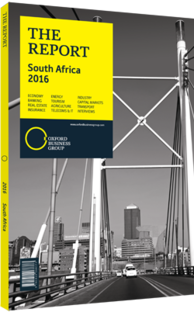Adam Habib, Vice Chancellor, University of Witwatersrand: Interview

Interview: Adam Habib
With 20% of public expenditure for 2014/15 going to education, what steps can be taken to ensure these resources are properly managed?
ADAM HABIB: Health and education have been identified as apex priorities by the government towards ensuring the inclusive growth of a nation that can one day transition into a knowledge-based economy. These sectors receive the biggest portions of the government’s annual budget. However, if we compare progress and reform to resource allocation it becomes clear there is room for improvement. While education receives over 20% of public expenditure, we must distinguish between basic education and higher education, as the latter receives less than the former.
I believe the university system has doubled in size and is experiencing a bit of pressure. As a result, higher education requires more investment not only to expand but to maintain and improve its quality, especially if we are to reach the government goal of increasing public sector enrolment to 1.5m by 2030. In parallel to this, more vocational and further education and training colleges will be required to provide the requisite skills for those entering the workforce who for whatever reason cannot attend university. Another challenge is ensuring that secondary schools produce enough graduates who qualify for enrolment in higher education. While we have near-universal enrolment at a basic level, the numbers dwindle once you reach higher education, with high drop-out rates due to factors such as low matriculation passing rates and financial barriers. Resources at this level are most prone to mismanagement as the deployment of the budget is done at a provincial level.
Research shows that if universities are funded at a global level, they should be much higher than they are now, so subsidies aren’t close to what they should be. This is a challenge as universities have had to increase student fees to make up for inadequate subsidisation. But this is no longer sustainable to compensate the shortfall via student fees alone. There needs to be a rethink on appropriate spending towards universities as I believe there isn’t sufficient appreciation by government on how complex universities’ operations are.
How can educational inequality be reduced?
HABIB: To fix the education system we must follow up on four issues: making students stay in classrooms, having teachers in the classroom, ensuring qualified teachers in the classroom and improving infrastructure. We have successfully reached near-universal enrolment at the primary school level, and now we must harness that to ensure continuity and keep learners in school. This means making education as accessible as possible and removing factors that lead to drop-out. Another issue we face is a lack of teachers, and of those we have, there is a portion who are simply unqualified. We must raise the competence level of our teachers, especially in maths and science. This requires monitoring and testing of our teaching workforce. We can’t have the low matriculation pass rates we are seeing and be surprised to also see rising youth unemployment due to a skills mismatch. Perhaps a bridge year should be introduced for those underprepared to enter university.
Furthermore, we don’t need to continue writing new policy documents or curriculum statements, rather we must focus on implementation of what is in place, and most of all the basics. Lastly, we must focus on improving the infrastructure of our schools. At a primary and secondary level, especially in the rural areas, some schools lack basic materials such as desks and textbooks as well as a properly run building. At a higher education level, Wits University alone spent over R2bn ($172.8m) in infrastructure investment. The private sector could also potentially play a role – especially in primary and secondary schooling, as there is a market for it – while providing assistance to well established public universities in South Africa.
You have reached the limit of premium articles you can view for free.
Choose from the options below to purchase print or digital editions of our Reports. You can also purchase a website subscription giving you unlimited access to all of our Reports online for 12 months.
If you have already purchased this Report or have a website subscription, please login to continue.

